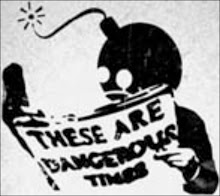Two articles in particular caught my attention over the weekend. The first article was published in Grist is by Jennifer Morgan, Climate Director at the World Resources Institute, a think tank based in Washington, DC. The title of her article is “What can climate negotiations achieve in Cancun?” She writes “Establish a REDD+ mechanism” in a section titled “What decisions can be made in Cancun?” What was striking for me was the title of the following section, “What other issues remain contentious?” Clearly REDD+ is not a contentious issue for Morgan. The second article was by Kate Sheppard titled “Cancun or Bust” published in Mother Jones. Her penultimate paragraph reads, “Despite the very low expectations for a major agreement, there are major areas where the observers expect to see progress this year: ... the creation of programs to prevent deforestation (known as Reducing Emissions from Deforestation and Forest Degradation, or REDD). Progress in those areas would go a long way toward building trust and partnership between nations, observers say.”
I bet you’re wondering—what the heck is REDD?
Almost a year ago I went to Copenhagen for the last round of the UN Climate Conference COP15 with Sarah James, Gwich’in activist and current board chair of the Gwich’in Steering Committee in Fairbanks, Alaska. During the opening day of the conference Amy Goodman interviewed Sarah and I for a segment on Democracy Now. There, I participated in a contemporary art exhibition ‘(Re–) Cycles of Paradise’ organized by ARTPORT in partnership with Global Gender and Climate Alliance, where I presented a photo–video installation to highlight Sarah James’ work. That exhibition is currently being shown at the Centro Cultural de España in Mexico City through January 16 (will overlap with COP16 in Cancún).
While in Copenhagen, we stayed at a small hotel where each day we would gather at the lobby with other fellow indigenous activists including musician Robby Romero and his daughter, singer Dakota René of the Eagle Thunder Entertainment. Robby asked me have you heard about REDD? He told me a whole bunch of things about it but with all the commotion of the conference I came back with little understanding of what REDD actually is, except that the indigenous communities around the world regard it as the “largest land grab of all time.” While the conference resulted in failure, it gave birth to what has come to be known as the Climate Justice Movement.
So here is REDD from two different perspectives.
REDD According to the United Nations
Reducing Emissions from Deforestation and forest Degradation
REDD is a program that was conceived by the United Nations and launched in September 2008 with expertise of UN Food and Agriculture Organization (UNFAO), UN Development Programme (UNDP) and UN Environment Programme (UNEP).
According to UN–REDD website: “Deforestation and forest degradation, through agricultural expansion, conversion to pastureland, infrastructure development, destructive logging, fires etc., account for nearly 20% of global greenhouse gas emissions, more than the entire global transportation sector and second only to the energy sector.” The webpage continues, “(REDD) is an effort to create a financial value for the carbon stored in forests, offering incentives for developing countries to reduce emissions from forested lands and invest in low-carbon paths to sustainable development. REDD+ goes beyond deforestation and forest degradation, and includes the role of conservation, sustainable management of forests and enhancement of forest carbon stocks.”
UN website also states, “The Programme currently has 29 partner countries spanning Africa, Asia–Pacific and Latin America, of which 12 are receiving support to National Programme activities.”
Let me explain in simple terms what it means. You may have noticed in the UN description, the line, “to create a financial value for the carbon stored in forests.” Whenever there is value there is money that can be exchanged. Say a company in Global North, take BP for example want to continue their carbon emissions, but they want to offset it to reduce their net carbon footprint, then they can buy carbon credit through REDD, in the process some forest in Global South say, Indonesia would be saved while BP continues business–as–usual.
What could be wrong with such a well meaning and benign scenario to save the planet from climate change disasters?
On November 25 UN–REDD Program released a Newsletter with success stories and plans for the Cancún conference that you can check out here.
REDD According to the Indigenous Forest Communities
Reaping profits from Evictions, land grabs, Deforestation and Destruction of biodiversity...
Continue reading
Subhankar Banajee @'Truthout'










No comments:
Post a Comment